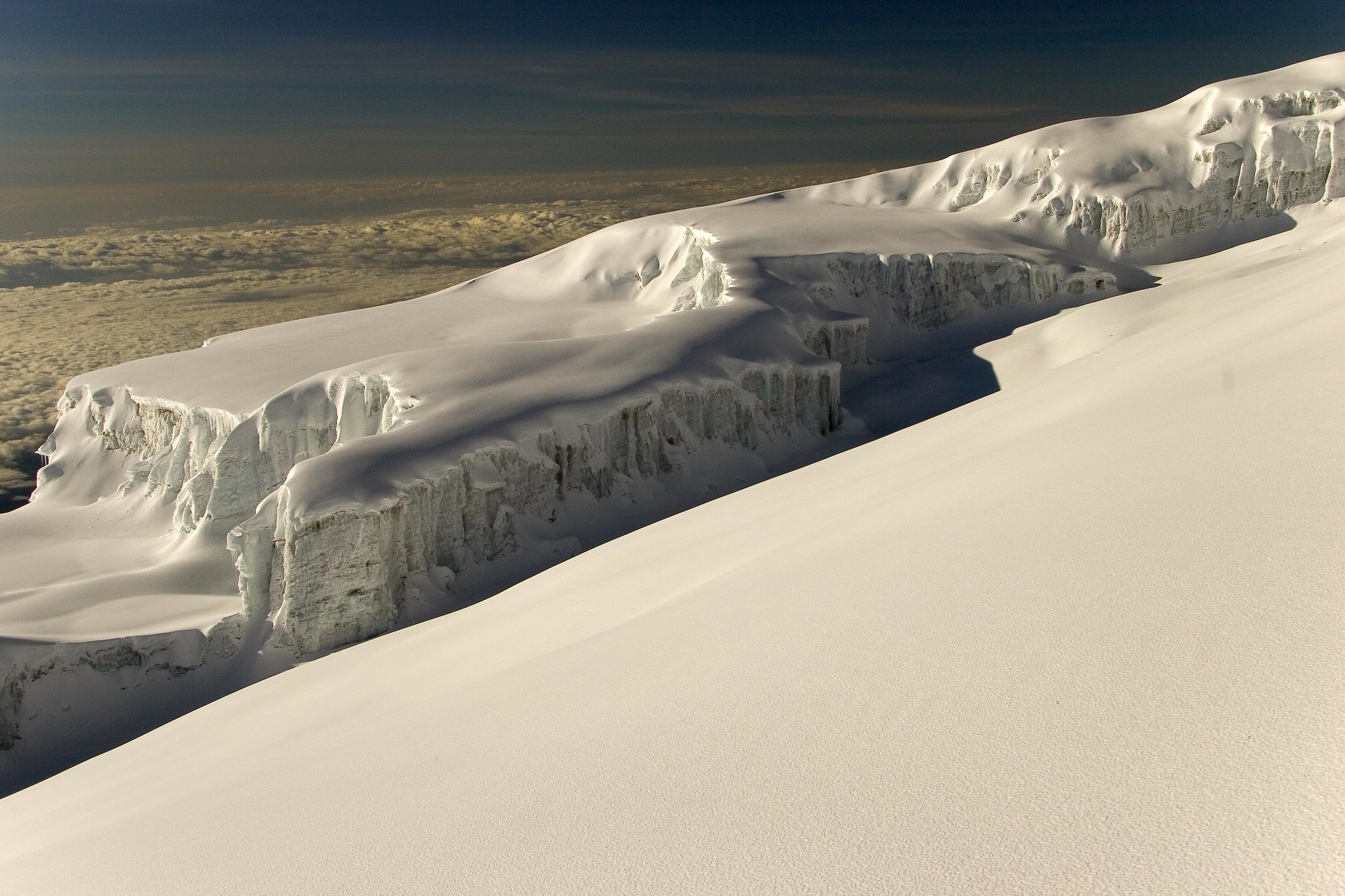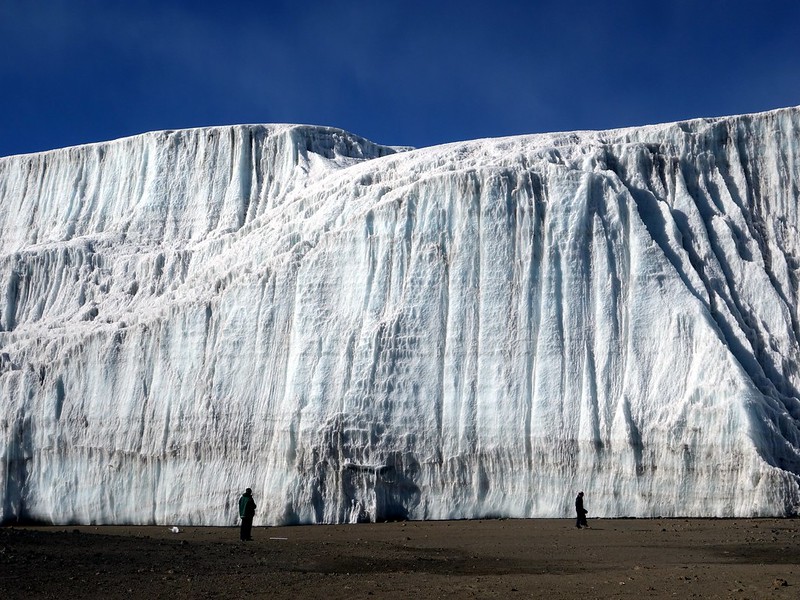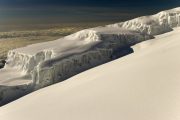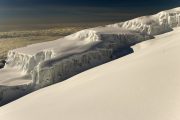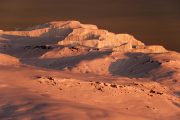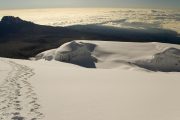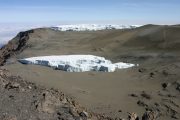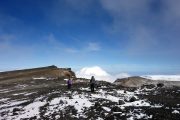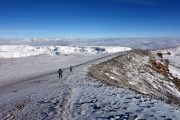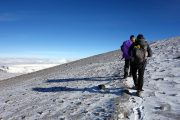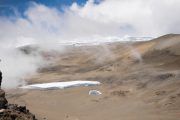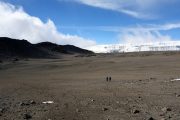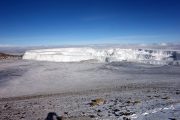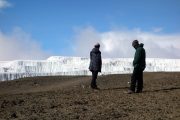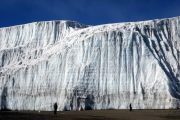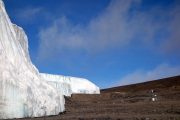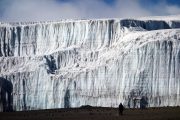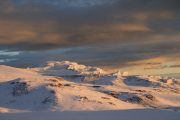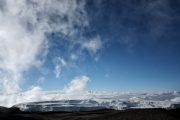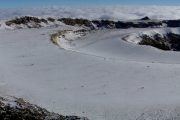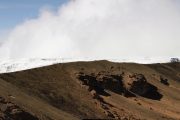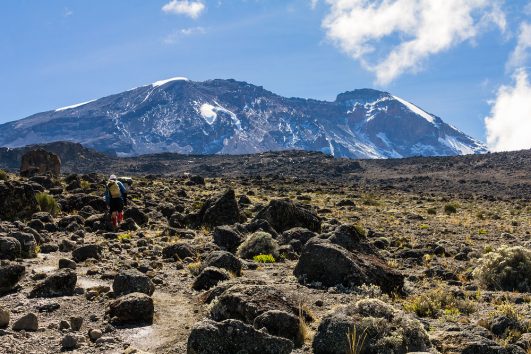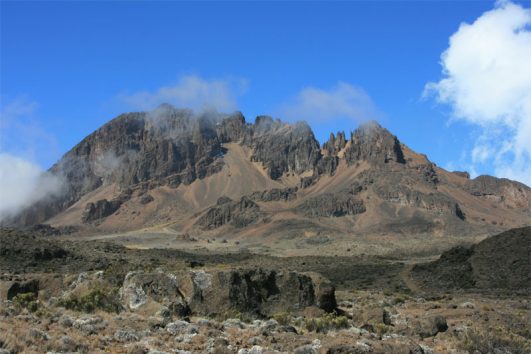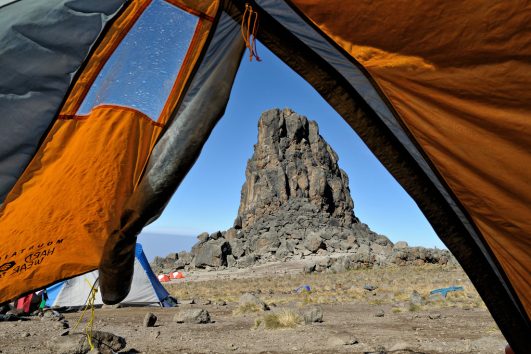The Northern Ice Field is by its own right the largest ice body on Mount Kilimanjaro at the moment, covering an area of 0.95 square kilometers (0.37 square. miles), when it was last measured in the year 2007
All the ice fields at the top of Mount Kilimanjaro we all connected forming one single block of ice. The ice Field namely Northern Ice Field, Southern Ice Field, and Eastern Ice Fields once formed part of a vast and extensive body of glacial ice at the summit of Mount Kilimanjaro when first scientifically examined in 1912.
Sadly, as snow on Kilimanjaro has been gradually melting over time, the icefields have been more and more exposed, which has led to an increase in the melting of the glaciers and icefields over time.
A study recently revealed that the Northern Icefield, previously the largest surviving ice field on Kilimanjaro, had shrunk and split into two halves. The northern ice field on the top currently has a gap wide enough to ride a bicycle through.
Would you like to visit the Northern Icefield?
Location of the Northern ice field
The Northern Ice Field is located near the summit of Mount Kilimanjaro in Tanzania, on the western side of Mount Kilimanjaro slopes at Uhuru peak. The Northern Ice Field lies on the north-western part of the summit peak, and as of the year 2021, it has the largest portion of ice remaining.
At one time, the Northern ice Field was huge enough that it used to act as a feeder for numerous glaciers with flowing ice from north to south of the mountain. Some of the glaciers include Credner, Drygalski, Great Penck, and Little Penck Glaciers.
Largest Icefield on Mount Kilimanjaro
What is Mount Kilimanjaro’s largest icefield? The Northern Ice Field is the largest ice field on the mountain by surface area, even larger than the Southern Ice Field. Up until the 1970s, when an Eastern Ice Field became apparent, the Northern Ice Field, which spans the crater rim’s north side, made up somewhat more than half of Kibo’s overall ice area. The Northern Ice Field continues to be Kibo’s greatest body of ice, despite the fact that the Eastern Ice Field has subsequently split into multiple entities. What is left of the Credner icefield, Drygalski, and Great Penck glaciers extends down north- and northwest-facing slopes beneath the Northern Ice Field. The Northern Ice Field and the Little Penck Glacier split in the 1990s, and the Little Penck Glacier, which is clearly visible now from western climb routes, has significantly shrunk in size since 2000.
Global Warming and the Northern Ice Field
The main cause of Mount Kilimanjaro’s diminishing glaciers is due to warmer and drier conditions believed to be as a result of global warming
This alarming change to the weather condition and temperature may not stop soon until the world acts fast as it is feared that most of the ice on top of Mount Kilimanjaro, if not the whole of it may be gone by 2040. Since the year 1984, a hole formed at the center of the Northern Ice Field then later on developed into a canyon by the year 2003. This canyon that formed in the middle of the Northern Ice Field exposed rocks that have never been seen in 11,000 years. By the year 2011, the Northern Ice Field split into two and Between the years 2000 – 2007, the Northern Ice Field thinned by an average rate of 1.9 m (6 ft 3 in).
Additional information
| Vegetation | Alpine desert region |
|---|

